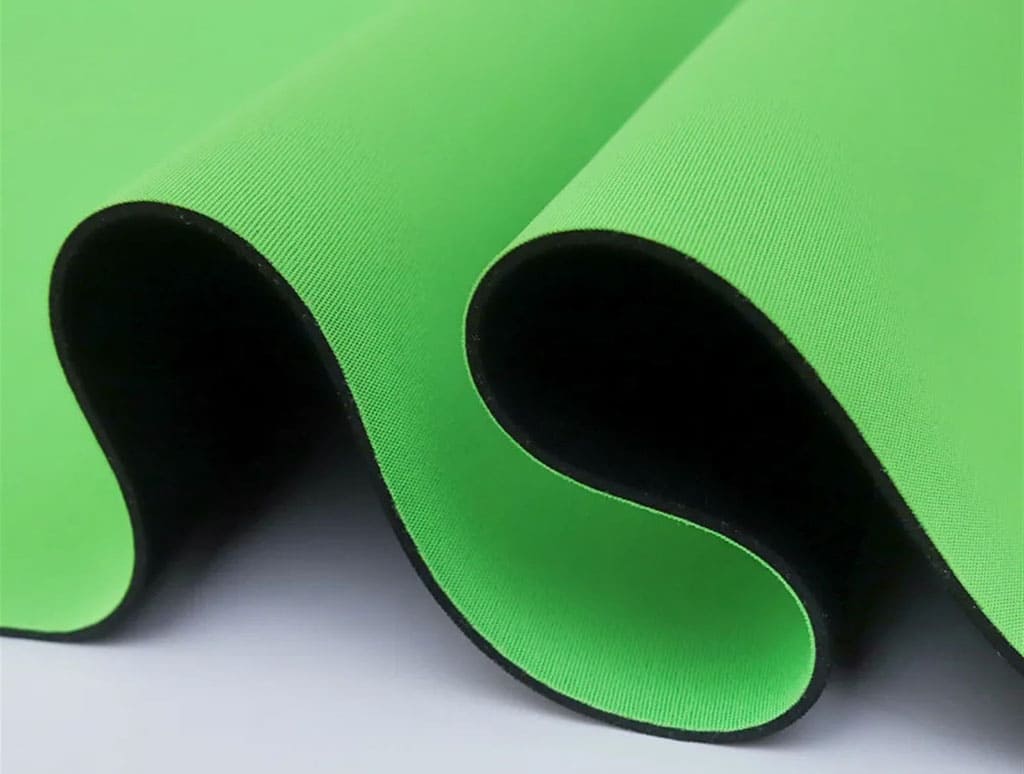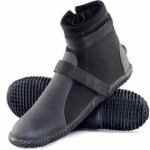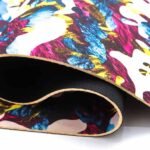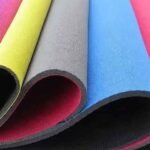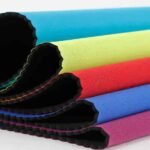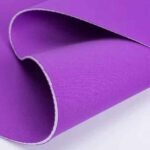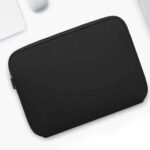Neoprene scuba fabric is an innovative material widely used across various industries. Its unique combination of durability, flexibility, and water resistance makes it a preferred choice for many applications, from fashion to industrial use. Understanding the characteristics of this fabric can help you decide if it meets your needs.
Neoprene scuba fabric is a synthetic material made from neoprene rubber with a foam core, offering thermal insulation, elasticity, and water resistance.
Let’s dive into the details of what neoprene scuba fabric is, how it’s made, and its various applications.
What Is Neoprene Scuba Fabric?
Neoprene scuba fabric is a composite material made from synthetic rubber, often laminated with other fabrics for added strength and versatility.
It is characterized by its lightweight yet durable structure, water resistance, and insulating properties, making it ideal for wetsuits, accessories, and more.
Neoprene scuba fabric stands out due to its ability to combine comfort and functionality, which explains its popularity across diverse industries.
How Is Neoprene Scuba Fabric Made?
The production process of neoprene scuba fabric involves several steps, beginning with the creation of neoprene rubber and culminating in fabric lamination.
Neoprene is made through the polymerization of chloroprene, creating a synthetic rubber. This rubber is then formed into sheets and laminated with fabrics like polyester or nylon to enhance durability.
Key Steps in Manufacturing
- Polymerization: Chloroprene molecules are polymerized to produce neoprene rubber.
- Foaming: Air is introduced to create a lightweight foam structure.
- Sheet Formation: Neoprene foam is cut into sheets of varying thickness.
- Lamination: The foam is bonded with fabric layers for strength and versatility.
This multi-step process ensures that neoprene scuba fabric retains its essential properties while being easy to work with.
Is Scuba Fabric the Same as Neoprene?
Scuba fabric and neoprene are often confused due to their similar uses and properties, but they are not the same.
While neoprene is a rubber-based material, scuba fabric refers to a type of double-knit fabric that mimics the smooth and structured appearance of neoprene.
| Feature | Neoprene | Scuba Fabric |
|---|---|---|
| Material Base | Synthetic rubber | Polyester or nylon blend |
| Structure | Foam-based with fabric lamination | Double-knit textile |
| Key Properties | Water resistance, insulation | Stretch, lightweight, smooth |
| Common Uses | Wetsuits, gloves, bags | Dresses, sportswear, accessories |
Understanding the differences between these materials can help in choosing the right one for specific applications.
What Are the Different Types of Neoprene Material?
Neoprene comes in various types, each tailored to specific needs. These variations depend on the manufacturing process, thickness, and added features.
Common types include standard neoprene, limestone neoprene, and eco-friendly variants.
Types of Neoprene
-
Standard Neoprene
- Made from petroleum-based resources.
- Offers general-purpose properties like flexibility and water resistance.
-
Limestone Neoprene
- Derived from limestone rather than petroleum.
- Lighter, stretchier, and more eco-friendly.
-
Eco-Friendly Neoprene
- Uses recycled materials or sustainable processes.
- Focused on reducing environmental impact.
-
High-Performance Neoprene
- Enhanced insulation and durability.
- Used for extreme sports and industrial applications.
By selecting the right type, users can maximize the efficiency and suitability of neoprene for their projects.
What Are the Main Uses of Neoprene Scuba Fabric?
Neoprene scuba fabric serves a wide range of purposes due to its unique properties.
The fabric is used in industries such as sports, fashion, healthcare, and industrial manufacturing.
Popular Applications
-
Sportswear and Wetsuits
- Provides insulation and water resistance for divers, surfers, and athletes.
- Offers flexibility and comfort in movement.
-
Fashion and Accessories
- Used in structured garments, bags, and shoes for its sleek appearance.
- Adds durability and aesthetic appeal.
-
Medical Applications
- Neoprene braces and supports are widely used for injury prevention and recovery.
- Offers compression and support for joints and muscles.
-
Industrial Uses
- Acts as an insulating layer in machinery.
- Protects against extreme temperatures and chemicals.
Neoprene scuba fabric’s adaptability ensures its relevance in both functional and aesthetic contexts.
Conclusion
Neoprene scuba fabric combines the best of synthetic rubber and textile technology, offering unparalleled functionality and versatility. Whether for wetsuits, fashion, or industrial use, its properties make it a reliable choice.
At Szoneier, we specialize in high-quality neoprene fabrics tailored to your needs. From custom designs to eco-friendly options, we provide solutions for every application. Contact us to explore how neoprene scuba fabric can elevate your projects.

